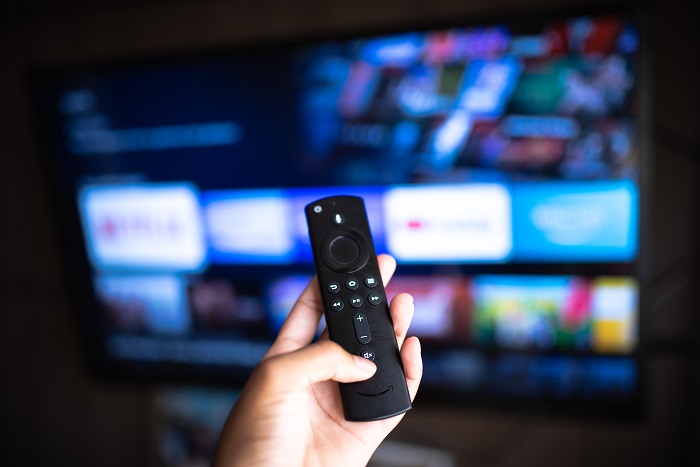Older readers probably remember that "watching a new movie tonight" meant getting dressed, going to the video store, finding the title you wanted on DVD or VHS, watching it at home, and returning it to the store the next day. In the case of the big blockbusters, maybe two or three copies of the film were present in the rental room, but if half the estate was in the mood for a movie, most had to settle for an alternative.
The younger ones will recall how watching a film was preceded by searching on various sharing servers and torrent catalogues, where illegally uploaded titles could be downloaded and played on a computer screen or later on a TV set. That is, unless you accidentally downloaded a mislabeled "kinorip" of poor quality or a version with Russian or Polish asynchronous dubbing. Then it was better to go to bed early.
Sounds like the Middle Ages today. There are catalogues filled with thousands of films and series waiting for you right in your TV set. Just click a button on the remote. What's more, many services will offer them in a quality not too far removed from the way the filmmakers worked on them in the studio, often with Dolby Atmos surround sound, which is far from common even in cinemas.
Services tested:
- Amazon Prime Video - Lots of "music" for little money
- Apple TV+ - Quality over quantity
- Disney+ - For true movie geeks
- Edisonline - Content quality, not picture quality
- HBO Max - Waiting for content to arrive
- iBroadcast - Hundreds of titles for a licensing fee
- Netflix - It's all about the money
- Prima+ - Free with advertising, no advertising for money
- SkyShowtime - Price rises, quality lags
- Voyo - Novel series even earlier than on TV
For an optimal experience you need a smart TV (ideally with 4K resolution) and a reasonably fast internet connection - say 50 Mbit/s. If multiple users will be actively using the connection at the same time, 100 Mbit/s is a sure thing. We're talking ultra-high definition 4K playback with high dynamic range HDR. If you're happy with FullHD resolution, you can fit in 10 Mbit/s. The picture won't stall even at slightly lower speeds, because the apps themselves choose the video quality based on the data rate they have available at the time. Of course, it's not going to be a great experience.
The two requirements aren't too demanding. The aforementioned TVs start at around seven grand in price. More demanding viewers, however, won't have a choice in this category. For them, there are devices at four times the price (sometimes even more). And the Internet should not be a problem either, according to the CTU monitoring report, in the second quarter of 2023 the average (measured by the NetTest tool) download speed was 88.6 Mbit/s and the most common connections were 30-100 Mbit/s.
Basically, the prices of VOD (video on demand) services are also funny. Monthly flat rates start at 79 CZK and end at 319 CZK. Renting one movie in a rental store used to cost 30 CZK (today it would be basically double after taking inflation into account), a cinema ticket now costs 140-315 CZK for one person. If you watch one movie for two, even the most expensive VOD service is already cheaper than going to the cinema. And with a 65-inch TV or larger and a surround sound setup, home screening is no longer a poor substitute for the cinema, but a full-fledged experience.
There's one annoying catch, however. Video-on-demand services are plentiful, and each has a slightly (or completely) different selection of titles. This means that if you pay for one of the services, it doesn't mean that it will offer you the series your colleagues at work have been talking about. Or that blockbuster you missed out on going to the cinema a few weeks ago. And while you're likely to get the best selection on a service with more titles, it could easily be that the one you want to watch is on a service with a catalogue that's many times smaller. So you have three options: either you choose the service that attracts you the most and just be happy with it, or you subscribe to multiple services at once or rotate them at intervals. You can stop subscribing to one and start another.
One of the benefits of video-on-demand services is the ability to watch shows on smartphones, tablets or computer browsers. So you don't have to do without movies and series even when you're travelling or at the cottage. Some apps allow you to download shows to your phone or tablet for playback in places without internet - like on a plane - or where the service or shows wouldn't work at all or only through a VPN (for example, on holiday abroad). But it tends to be service by service and sometimes show by show.
Test protocol
The tested services were ordered and paid for by the editorial staff from their own budget. All services were tested on a high-end Philips 65OLED908 TV with Android TV operating system. The internet connection was via a fibre-optic connection with a symmetrical 100Mbit/s connection, the TV was connected to the router via an Ethernet cable. A Samsung Galaxy S22 Ultra smartphone was used to test smart device applications, connected via Wi-Fi 6. For the apps, we examined the content offer, the presentation of the catalogue to the viewer, the possibilities of searching for titles, the user interface and, last but not least, the technical quality of the content. Data on the number of titles were taken from the Filmtoro server. And where possible, from the official data of the services.
More on: idnes.cz
Source: idnes.cz

